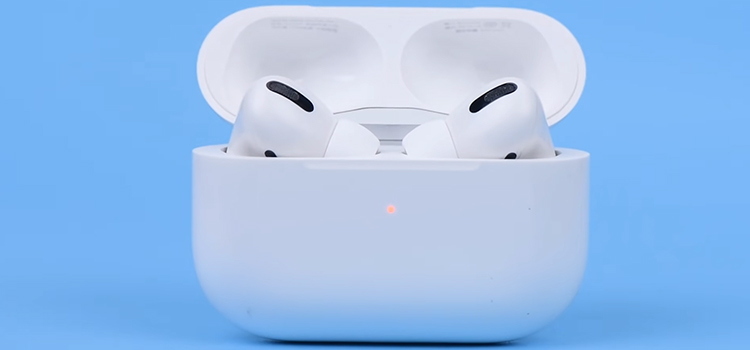Does Displayport 1.2 Support 144hz? My Findings
A 144Hz display refers to a monitor or screen that can refresh its image 144 times per second, resulting in a smoother and more fluid visual experience. Traditional monitors usually have a 60Hz refresh rate, meaning they update the image 60 times per second.
A high refresh rate is all the buzz these days, especially in the world of gaming. However, it comes with its own caveats as well. One of them being the support issue. With so many display ports and monitor types as well as GPUs, it is natural to feel overwhelmed.
So, does Displayport 1.2 support 144 hz? The answer is yes.
However, there’s more to it, which we will discuss in this article. So, read on!

Which Display Ports Support 144Hz?
DisplayPort 1.2 is the most common standard that supports 144Hz. It’s crucial to ensure that both your graphics card and monitor have compatible DisplayPort 1.2 ports. Some modern monitors and graphics cards may also offer DisplayPort 1.4, which is even more capable and can handle higher resolutions and refresh rates.
Why 144Hz is Important?
Smoother Gaming Experience
Gamers can benefit greatly from 144Hz displays as they reduce motion blur and provide more accurate and responsive gaming experiences.
Reduced Screen Tearing
High refresh rates help reduce screen tearing, a common issue in gaming where the monitor displays multiple frames at once.
Enhanced Motion Clarity
144Hz displays make fast-moving objects in games and videos appear more defined and less blurry.
Productivity Boost
Beyond gaming, a 144Hz display can improve overall productivity by making everything from scrolling through web pages to editing videos feel smoother.
Are There Any Alternatives to 144Hz Displays?
While 144Hz displays are popular for their enhanced performance, there are some alternatives you can consider:
- 60Hz Displays
These are the most common monitors and are suitable for everyday tasks and casual gaming. They are also less demanding on your hardware.
- 240Hz Displays
For those who demand the ultimate gaming experience, there are 240Hz displays available. They offer even smoother visuals but require very powerful hardware to take full advantage.
- Adaptive Sync Technologies
Adaptive Sync technologies, such as NVIDIA G-Sync and AMD FreeSync, can help to make lower refresh rate displays feel smoother by reducing screen tearing and stuttering.
Troubleshooting 144Hz Display Issues
While 144Hz displays offer great performance, sometimes users may encounter issues. Here are some common problems and troubleshooting steps:
No Display or Black Screen: If your monitor isn’t displaying anything, ensure your graphics card can support 144Hz and that the correct input source is selected on the monitor.
Flickering or Artifacts: Flickering or strange artifacts on the screen can indicate a faulty cable or a compatibility issue with your graphics card. Try using a different cable and updating your graphics drivers.
Stuttering or Tearing: If you experience stuttering or tearing, consider enabling V-Sync or using adaptive sync technologies like G-Sync or FreeSync if your monitor and graphics card support them.
Incorrect Resolution or Refresh Rate: Ensure that your display settings in Windows or your graphics card control panel are configured correctly to output at 144Hz.
FAQs About 144Hz Displays
Can I use a 144Hz display for non-gaming tasks?
Yes, 144Hz displays can improve the overall user experience for tasks like web browsing, video streaming, and content creation, thanks to smoother and more responsive visuals.
Do I need a powerful graphics card for a 144Hz display?
Yes, to fully utilize a 144Hz display, you’ll need a graphics card that can handle the higher frame rates. However, you can still benefit from the smoother visuals in non-demanding applications with a mid-range graphics card.
What’s the difference between 144Hz and 240Hz displays?
A 240Hz display offers even smoother motion than a 144Hz display. However, achieving high frame rates for a 240Hz display requires extremely powerful hardware, and the difference may not be as noticeable for everyone.
Does cable quality matter for a 144Hz display?
Yes, the quality of the cable matters. A high-quality DisplayPort cable is recommended to ensure a stable connection for 144Hz displays. Using older or lower-quality cables may result in issues.
Sum Up
In the world of displays, a 144Hz monitor has become a game-changer for gamers and a productivity booster for professionals. Its smooth refresh rate, combined with the right graphics card, can elevate your computing experience. While it’s important to ensure compatibility and troubleshoot any issues, the benefits of a 144Hz display are well worth the investment. So whether you’re an avid gamer or a demanding professional, a 144Hz display can take your digital experience to the next level.
Subscribe to our newsletter
& plug into
the world of technology





